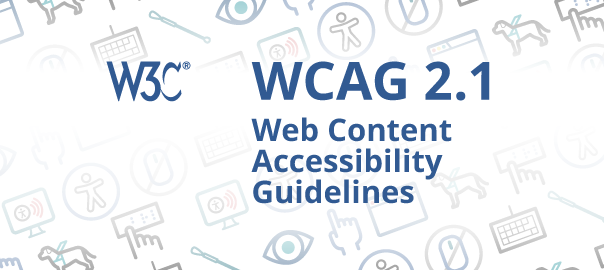InclusiveDocs is WCAG 2.1 AA Compliant! What Does This Mean?
 InclusiveDocs
InclusiveDocs
To explain the WCAG and how these guidelines are developed and implemented, this information was taken from the great resource w3.org.
The World Wide Web Consortium (W3C) develops international Web standards: HTML, CSS, and many more. W3C’s Web standards are called W3C Recommendations.
Web Content Accessibility Guidelines (WCAG) are developed through the W3C process in cooperation with individuals and international organizations to provide a single shared standard for web content accessibility that meets the needs of individuals, organizations, and governments around the world.
Web accessibility depends on several components working together, including web technologies, web browsers and other “user agents”, authoring tools, and websites.
The W3C Web Accessibility Initiative (WAI) develops technical specifications, guidelines, techniques, and supporting resources that describe accessibility solutions. These are considered international standards for web accessibility; for example, WCAG 2.0 is also an ISO standard: ISO/IEC 40500.
WCAG 2.0 was published in December 2008. The update WCAG 2.1 was published in June 2018.
WCAG documents explain how to make web content more accessible to people with disabilities. Web “content” generally refers to the information on a web page, web application or document, including information such as text, images, and sounds and code or markup that defines structure, presentation, etc.
Web accessibility means that websites, tools, and technologies are designed and developed so that people with disabilities can use them. Everyone should be able to perceive, understand, navigate, and interact with the Web, and contribute to the Web.
Web accessibility encompasses all disabilities that affect access, including auditory, cognitive, neurological, physical, speech and visual differences.
Web accessibility is good for everyone. It also benefits people without disabilities, for example, people using mobile phones, smart watches, smart TVs and other devices with small screens or different input modes. People with changing abilities due to ageing and people with “temporary disabilities” such as a broken arm or lost glasses can also benefit from accessibility features.
Subscribe to my newsletter
Read articles from InclusiveDocs directly inside your inbox. Subscribe to the newsletter, and don't miss out.
Written by
